Why are gooseberry caterpillars dangerous and how to deal with them?
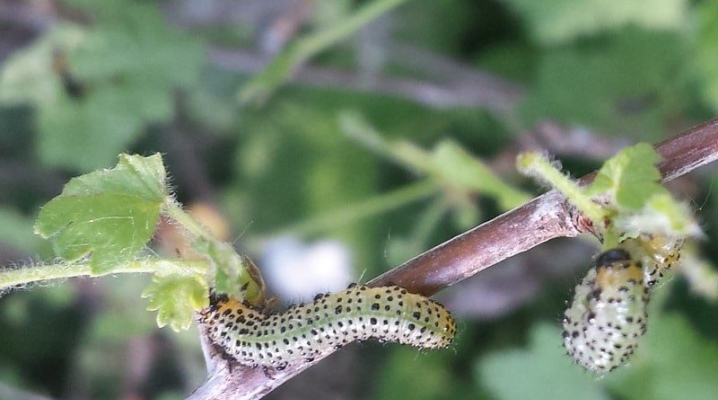
Caterpillars on gooseberries are a fairly common phenomenon, in the fight against which numerous folk, chemical and other means are used. Understanding what to do with green pests when you first encounter them can be quite difficult. A detailed story about how to fight if they ate the leaves or settled in the fruits of this bush will help to understand everything.
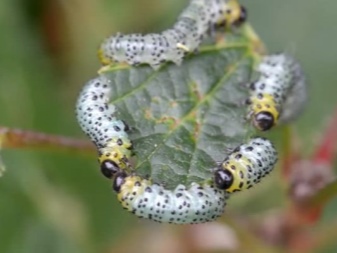
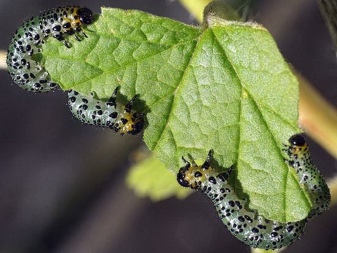
Description of pests
Not all caterpillars are capable of living on gooseberries. Only a few species of butterflies lay eggs on this bush. To understand which pests have appeared in the garden will help to study their appearance.
Most often, the bush is attacked by several types of caterpillars.
- Glass-makers. These pests get on gooseberries from currant bushes. Adult females lay eggs, from which white larvae with a black head appear after 2 weeks. They are incredibly gluttonous: having destroyed the foliage, they begin to gnaw the shoots. Plants simply cannot continue the movement of juices, they die if the necessary measures are not taken.
- Fireflies. These green caterpillars have a body length of no more than 15 mm, are distinguished by a black head, sometimes their body is covered with stripes of the same shade. Pests survive winter in the pupation stage, in spring, with the beginning of flowering, they turn into butterflies, actively laying eggs. A week later, caterpillars appear from them, making holes in the fruits - they can be seen inside the berries. Within a month, a previously healthy bush turns into a dying plant, entangled with whitish threads - the product of the pest's vital activity.
- Sawflies. The greenish-blue caterpillars of this species have a translucent body, strewn with rows of black dots arranged in an annular fashion. Taking out a sawfly is always fraught with certain difficulties. Butterflies lay eggs on the underside of leaves, from which larvae appear, eating tender shoots. Despite the relatively short life span, the pests reproduce very actively, rapidly increasing their population.

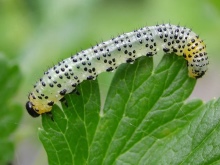

These are the main types of caterpillars that infect gooseberry bushes. It is quite difficult to find them at an early stage of development even for an attentive summer resident. That is why the main struggle often unfolds not for the preservation of the harvest, but for the salvation of the plant itself.
Ways to fight
Having discovered that the caterpillars have eaten the leaves on the gooseberry, you must begin to fight them without delay. It is much easier to get rid of pests at the initial stage of damage. It is much worse if the caterpillar population already feeds not only on leaves, but also on fruits. In this case, it will be more difficult to save the plants.
It is worth considering that it is usually pointless to carry out only chemical treatment or poison pests with folk remedies.
Caterpillars multiply and eat young greens much faster than they die. Accordingly, in the summer, an active increase in the population can easily leave the garden without a crop. Moreover, it is also impossible to spray the bushes with any means during the fruiting period.
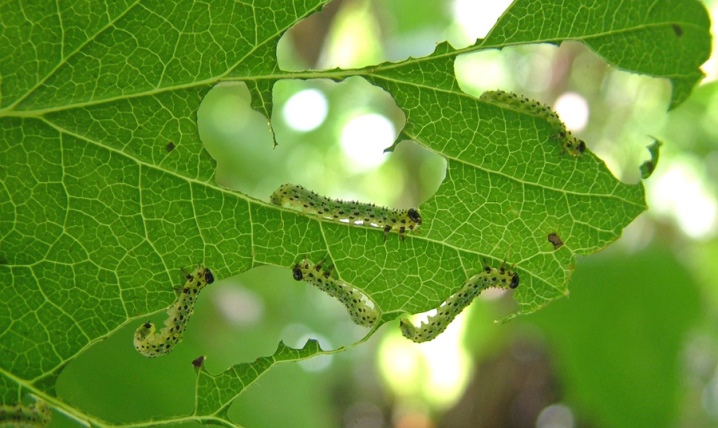
It is rather difficult to figure out what is the best treatment - to spray or water the plants when the caterpillars attack, without determining their type. Until the pests have eaten the entire crop, they can be found on the leaves, branches, fruits of plants. If the caterpillars attacked the fruits by making holes in them, it is better to use modern pesticides.At the initial stage of infestation, even the simplest measures, such as manual collection of pests, will suffice.
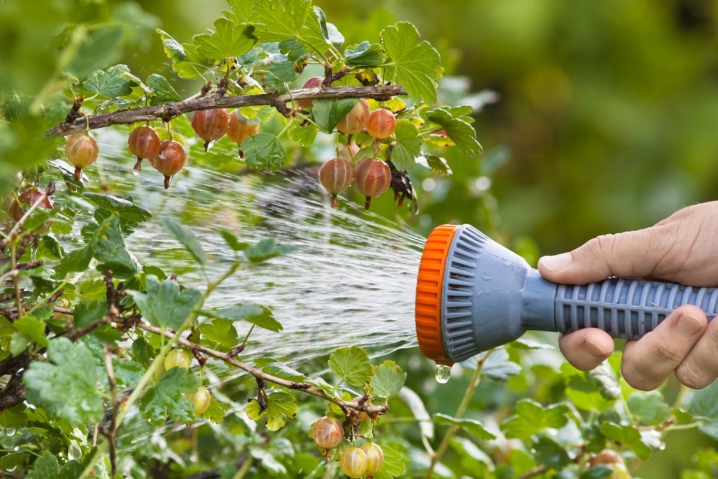
Mechanical
The most obvious way to deal with gooseberry caterpillars is to inspect and remove pests from the bushes. All actions are performed manually, without significant costs. It will not be possible to remove all larvae and adults. But with regular holding of such events, you can significantly reduce the size of their population. Moreover, by combining mechanical methods of combating pest control, you can easily cope with the invasion of caterpillars in the garden.
In addition to direct collection of pests, you can also carry out:
- shaking off bushes;
- inspection of the backs of the leaves;
- unfolding trapping belts.
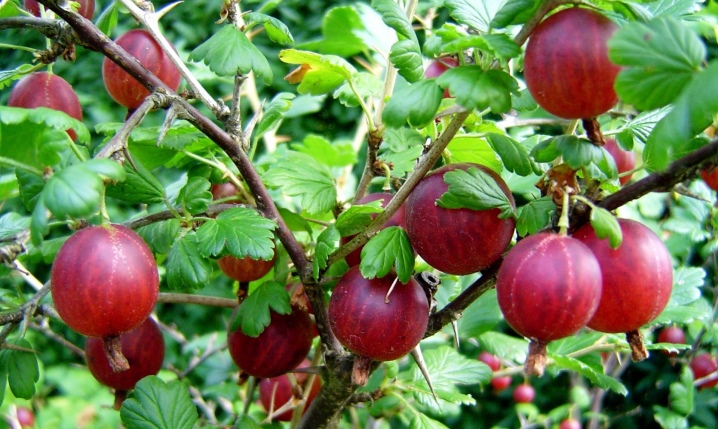
The last method should be discussed in more detail. Such traps are made of birch bark or flexible tape, covered with a sticky and adhesive composition. You can make it yourself by mixing burdock oil and a solution of tar. Once on the surface of the belt, the caterpillars can no longer crawl away.
Chemicals
Industrial pesticides are the most effective solution in pest control. They lead to the rapid death of caterpillars at any stage of their development, interfere with the normal development of pupae.
For the processing of gooseberries, a number of products can be recommended that have already successfully proven their effectiveness.
-
Chlorophos. A chemical product belonging to the organophosphorus group. Differs in a rather high toxicity. Available in the form of pastes, powders for the preparation of solutions. Sanitization with chlorophos is indicated when moth caterpillars or sawfly are found on the gooseberry bushes.
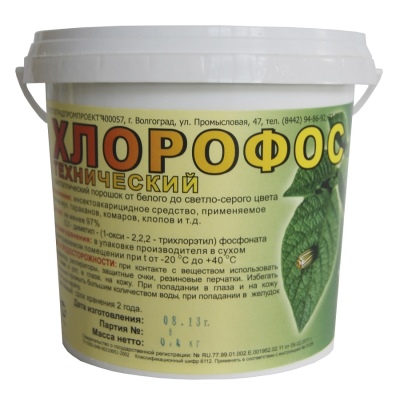
- Pyrethrum. Natural insecticide, obtained from the flowers of the Caucasian chamomile, its chemical analogs are synthesized in a laboratory way. The chemical preparation is suitable for spraying in solution, applying to the soil in powder. It is imperative to carefully process the affected shoots.
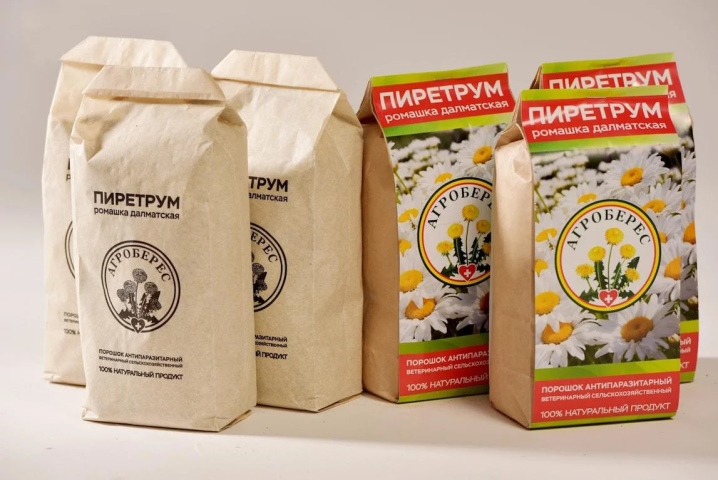
- "Sevin". A toxic chemical of a wide spectrum of action, destroys not only larvae, but also eggs. This drug can be used for the destruction of fire, glass. You can spray the composition only before flowering. It is distributed over the surface of the shoots.

- "Entobacterin-3". This chemical is considered to be the most effective against sawfly. The composition is effective only when reaching average atmospheric temperatures of at least +20 degrees. The drug is characterized by low toxicity, does not harm beneficial insects.
- Fitoverm. A safe biological product can be used even during the gooseberry flowering period. Its effect lasts for 2 weeks, after which repeated disinsection is indicated. Caterpillars die within 24 hours. The solution is prepared in the proportion - 1 ml of the drug per 1 liter of water.

When fighting green and transparent caterpillars on gooseberries, it is recommended to use Iskra and Fufanon preparations, which have proven themselves well as wide-profile insecticides. It is possible to work with these types of products only with gloves, observing all the necessary safety measures.
Traditional methods
It is possible to use substances safe for fruits during the flowering period of the gooseberry, as well as during the time when the berries are already ripening on it. Unlike chemical pesticides, they do not accumulate in plant tissues. But they have the ability to scare off pests at the stage of their active reproduction. In some cases, folk remedies do a good job even with caterpillars, leading to their death.
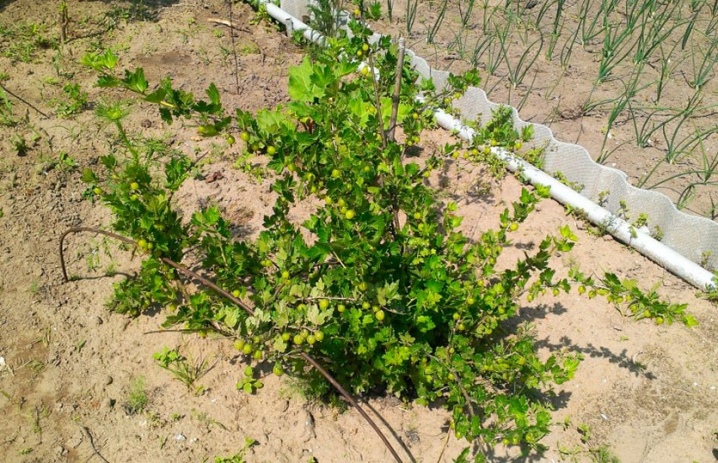
There are several of the most popular folk recipes for pest control.
- Infusion of fir cones. It is prepared from young shoots. In this case, 100 g of green cones are poured into 1 liter of warm water, the resulting solution is kept for 5 hours. After that, you can proceed to spraying the bushes, having previously filtered the infusion. It is recommended to repeat the treatment weekly throughout the flowering and fruiting period.
- Tobacco-ash mixture. The main danger is posed by butterfly pupae, which undergo transformation under the surface of the soil. It is to combat them that soil cultivation around the base of the bush is directed. For this, a mixture of 1 tbsp is prepared. l. dry mustard, 300 g of wood ash and 250 g of tobacco dust. The resulting composition is scattered over the surface of the soil.
- Fumigation of bushes. For these purposes, a mixture of ash or wood chips with tobacco crumbs and dust is used in a volume of about 2 kg. It is set on fire by placing it in a special container and left to act for 30-40 minutes.
- Vinegar. The insecticidal properties of this natural substance allow processing without risk to plants. In addition, vinegar has fungicidal properties, at a concentration of 9% it provides protection against fungal infections. Spraying is done in the evening.
- Ammonia. It has a deterrent rather than insecticidal effect. Ammonia vapors can be hazardous to humans. The solution is prepared in a respirator by adding 50 ml of ammonia per 10 liters of water. The resulting mixture should be sprayed with gooseberry plantings.
Folk remedies will not work if left without additional support measures. The affected parts of the bush must be cut off, the spoiled fruits must be removed. Near the plant, you need to constantly loosen the soil, preventing the development of pupae. Only an integrated approach will save the crop from complete destruction.
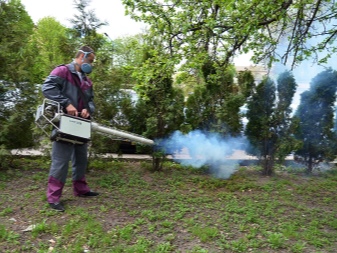
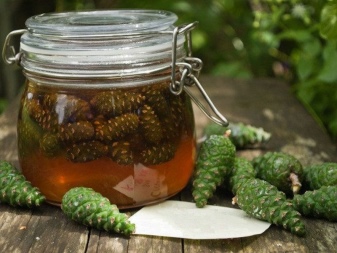
Prevention measures
Protection of gooseberry bushes from the invasion of caterpillars is most often carried out using the simplest means. For example, you can plant a red elderberry nearby. The scent of this plant scares away butterflies looking for a good place to lay their eggs.
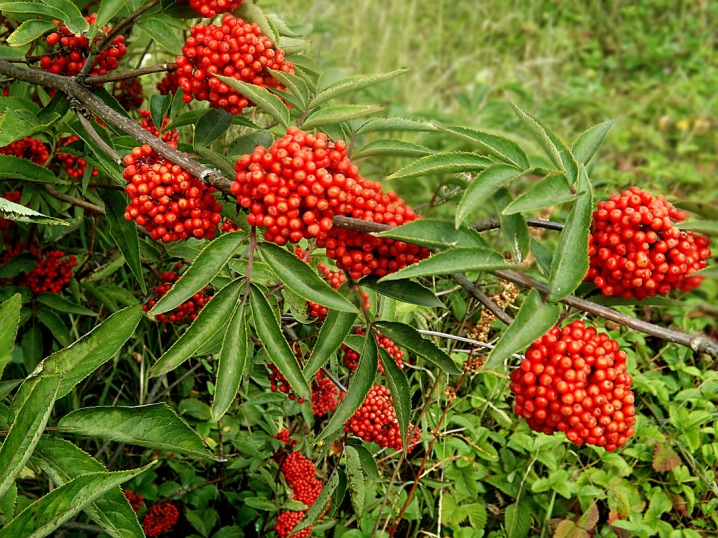
It is also possible to protect plants from caterpillars with the help of regular prophylaxis, which is necessarily carried out in the spring and autumn periods, as well as before and after the gooseberry bloom.
The scheme of plant processing depends on the time of carrying out.
- In the autumn, after the completion of leaf fall. During this period, it is imperative to clean the garden. The leaves are raked into heaps and then burned.
- When the snow melts. To destroy the pupae of pest butterflies wintering in the ground, it is worth spilling it with boiling water when the soil is exposed, without damaging the roots. The procedure can be repeated at short intervals.
- Before the appearance of the kidneys. At this time, Bordeaux liquid is used. With the right timing, track problems can be avoided.
- In early spring. During this period, the soil around the bush, as well as the first leaves, are sprayed and watered with a mixture of copper sulfate, crushed chalk and ash. And also treatment with chemicals will be effective. A single spraying with "Karbofos" or "Actellik" is suitable.
- In spring and autumn. Inspection of plants is carried out. Pruning of dry branches is carried out, shoots affected by disease or frost are removed.
- During the summer months. It is necessary to loosen the soil. This measure will ensure the destruction of pupae at the intermediate stage of development of butterflies in the ground.
A correctly drawn up plan of preventive measures allows you to protect gooseberry bushes from caterpillar attacks in the warm season.
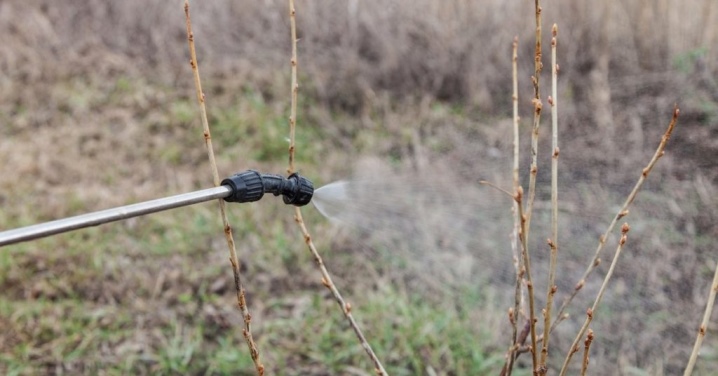













The comment was sent successfully.